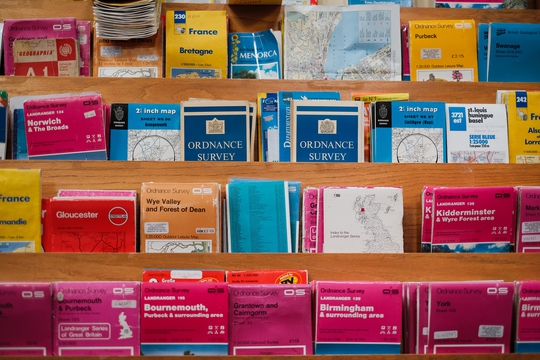Work during COVID in Sweden
by
Allt åt alla Göteborg (@alltatallagbg)
October 8, 2021
A summary of the Allt åt alla Göteborg inquiry

inquiry
Work during COVID in Sweden
by
Allt åt alla Göteborg
/
Oct. 8, 2021
A summary of the Allt åt alla Göteborg inquiry
In the summer of 2020 Allt åt alla Göteborg initiated a militant inquiry investigating the conditions of work as well as potential for struggle during COVID-19. In March 2021 we published a 28-page report in Swedish, this article is a translated summary of the findings. The full report can be read on our website.
Introduction
Even though Sweden never had a lockdown, the outbreak of the coronavirus was followed by an immense shock in all layers of society. Like everywhere else in the world, massive layoffs followed the pandemic with 285,000 people either getting terminated or getting their notice of termination in the first three months of the pandemic. In the same time period 594,000 workers were at some point furloughed. Add to that the transition to working from home and it becomes obvious that Sweden was facing a major restructuring of work life.
After decades of cost reductions and minimal investment in preparations for public emergencies the authorities lacked resources and strategies to counter the pandemic. Thus preventive measures against COVID-19 were often long overdue when applied in many parts of society.
The Swedish government on the other hand acted swiftly to protect the interests of big business. Keeping the economy running has been a key objective of the Swedish coronavirus strategy during every stage of the crisis. Discussions in Allt åt Alla about our work experiences during these months lead to us perceiving a need for an evaluation of the drastic changes going on in the economy from a workers’ perspective. To that end, an inquiry in two stages was designed. As we acted in the middle of a rapidly evolving crisis the objective was to acquire a snapshot of an evolving situation rather than an all-encompassing view of the pandemic.
During the conception of our inquiry we made a conscious effort to diverge from academic dogma. We are not academics but a political group and our inquiry had political goals. While the form of the survey made it difficult to get a genuine exchange between ourselves and the participants, we used various means to make participants interact with and steer the inquiry. This is perhaps most visible in our decision to include an optional field for notes or comments on each section to invite people to shape the inquiry beyond the limits set by the rest of the survey. We also held interviews with participants interested in partaking in longer conversations with us.
Plan of capital
One of our working hypotheses was that the state and corporations would take advantage of the pandemic to implement long desired restructuration of workplaces and the wider economy. Our inquiry aimed to investigate this theory, which turned out to be right.
The Swedish coronavirus strategy meant a division of all workers into two groups. On the one hand, those working “at the frontline”: workers forced to endure great risks and personal sacrifice doing work socially recognized as vital for the protection and reproduction of the society. On the other hand were those workers assigned tasks requiring them to avoid risks. This division was used as a rationale for a large-scale transition to working from home. In our inquiry we found that the division into these two groups wasn’t necessarily dependent on the worker’s ability to complete their tasks remotely, but rather on the employer’s ability to control and surveil the workers. For instance, many of those working at call centres had to remain working from the centre long after the transition of most office workers to working from home.
Employers received several benefits to aid in the transition, as well as to keep businesses open. One of the more notable examples was the ability to furlough workers and get up to 60% of the paycheck paid by the state. In our inquiry it quickly became obvious that this system was routinely abused, getting workers to report shorter hours than they actually worked. Several employers also used the dim economic outlook as an excuse to terminate workers, often rehiring them on zero-hour contracts.
Even though all of this is morally reprehensible we were not interested in investigating the moral character of employers but to use this interregnum as an opportunity to get a glimpse of the so-called plan of capital. Taken together with the aforementioned facts, the results from our survey showed a general tendency towards rationalisation and streamlining of the workforce. Employers could easily decrease the number of workers in the name of public safety and social distancing, while maintaining or even increasing their output, often in concert with an unwillingness to provide safety equipment and hand sanitizer for their employees. The part of the workforce that was encouraged to work from home seldom received help with ergonomy, or training in digital tools like Zoom (a common complaint among teachers). For many workers the pandemic led to a host of new assignments, generally on top of previous assignments. When asked whether they’d been compensated in some way for their increased workload, nearly everyone replied they hadn’t. All of this leads to an increase in mental as well as physical discomfort among huge parts of the workforce.
An isolated workforce and a union bureaucracy that largely endorsed the government strategy gave workers few opportunities to fight back, with social pressure and a sense of duty further decreasing their field of action. The reformist unions tied to the Social Democratic Party play an enormous role in Swedish labour policy, especially LO – the umbrella organization for blue-collar workers, negotiating wages and rights for almost all workers through collective bargaining agreements (the so-called Swedish model). Although the workers on a surface level seemed to accept the official strategy, our inquiry indicated an emergent critique of both their employers and their union — the approval rating of their respective handling of the pandemic was roughly the same. Around 61% of participants thought their employers hadn’t done enough to protect people in their workplace, while 57% were dissatisfied with their union’s efforts to protect them. The complementary answers paint a fuller picture and tell us that workers recognized their employers’ profit-driven motives, but that the reformist unions’ past moves towards centralization and away from grassroots struggle had made them unable to rise to the challenge – despite high union density. This in term creating further resentment and apathy towards the reformist unions in the first instance, while in the second instance leading workers to struggle through smaller, independent unions or use means outside of the scope of traditional trade-unionism, such as refusal of work assignments or organized quitting in protest, to achieve their goals.
This points us towards the conclusion that capital not only used the pandemic as a means of extracting short-term profits but also to establish a new workplace regime, shedding responsibilities of workplace safety and normalizing (increased) understaffing.
Concluding remarks
It’s hard to imagine a complete rollback in an eventual post-coronavirus world. We expect employers will seek to end restrictions detrimental to them (distancing, customer limits, et cetera), just like they will seek to keep the changes benefiting them.
The state of exception has largely meant that employers have been able to push through changes in the workplace with significantly less resistance than normal. As such the evolution of work life accelerated, making the so-called plan of capital clear: to streamline the labour market through a recomposition of the class. Either through a decrease in labour hours or by the addition of new duties. While far from anything new the intensity with which employers have pursued changes in these directions tells us that’s where we should focus our struggle.
Two groups of workers stood out to us in their answers, both in their general ability to articulate the problems facing them, and in their willingness to act: teachers and healthcare workers. This is why we decided to move forward with further inquiries focused on evolving the struggle of these groups. In our current inquiry we have already seen several examples of healthcare workers refusing tasks they deem unnecessary, this is a direct consequence of the dramatic increase in workload during the pandemic.
Many of the social developments during the COVID crisis are quite easily interpreted as a continuation of tendencies already present before the crisis. The restructuring of the workplace and the drive towards precarious employment are in line with long term goals of the state and the corporate sector. As conditions rapidly change, the terrain of struggle changes accordingly. Restructuration thus increases the chance of new and intensified confrontations between workers and their counterparts.
The Swedish working class is plagued by resentment and passivity after years of austerity and union concessions to corporate demands. However, pockets of resistance are developing in a number of sectors, both relating to informal organizing and non-union means of protest. It remains to be seen what the long term effects of the crisis will be in the development of the class struggle.
Our method
From July to October we gathered experiences from the corona pandemic in Swedish workplaces through an online survey. The survey also had the purpose of creating contacts with those workers interested in sharing in-depth information about their experiences of the pandemic. Online surveys are a less than ideal means for carrying out workers inquiry. The mediated nature of the question-asking tends to lead to a unilateral form of questioning thereby reproducing a sharp line between researchers and participants. We tried to experiment with different forms of questions and feedback opportunities in the survey design to challenge these limitations. For instance, one question could be followed up with an invitation to share reflections about said question. The questions in the survey centered around three subjects: workplace democracy, workload and risk of infection and health. The first category asked questions about workers’ participation in enacting safety measures, and their satisfaction with these. The second category simply inquired about the participants’ workload. The third category explored different aspects of health, both physical and mental, in connection with work during COVID.
The second stage of the inquiry revolved around interviews with workers drawn from the survey participants. 371 workers participated in the survey, and three in-depth interviews were conducted.
We disseminated the survey by use of several different methods. Social distancing at the time required us to depend a lot on digital dissemination. But leafleting in creative distanced ways still proved an effective way to spread the survey in places where Allt åt Alla has an organizational presence, such as the care sector.
author
Allt åt alla Göteborg (@alltatallagbg)
Subscribe to Notes from Below
Subscribe now to Notes from Below, and get our print issues sent to your front door three times a year. For every subscriber, we’re also able to print a load of free copies to hand out in workplaces, neighbourhoods, prisons and picket lines. Can you subscribe now and support us in spreading Marxist ideas in the workplace?
Read next

Initial Findings of the Class Composition Project
by
Notes from Below
/
March 21, 2023

